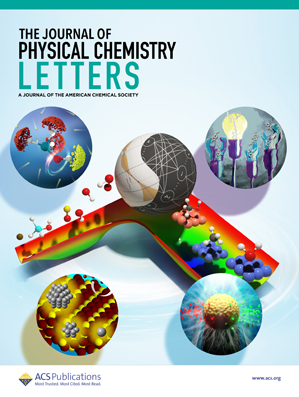Multifunctional BODIPY-Structured n-Type Conjugated Polymer for Simultaneous Interface Energetic Modification and Defect Passivation to Boost Efficiency and Stability of Inverted Perovskite Solar Cells
IF 4.8
2区 化学
Q2 CHEMISTRY, PHYSICAL
引用次数: 0
Abstract
The performance of inverted perovskite solar cells (PSCs) is hindered by non-radiative recombination within the perovskite and charge recombination at the cathode interface. To address these issues, we propose a technique involving oriented crystallization control and interface energetic modification using a conjugated thienyl-fused BODIPY homopolymer named IP1. IP1 demonstrated effectiveness in both defect passivation and energy level adjustment. Simultaneously, IP1 acts as a “protective shield” anchored on the grain boundaries and surfaces of perovskite, enhancing the crystal structure and preventing degradation of perovskite. Based on the efficient synergy above, the IP1-modified device achieves a high power conversion efficiency (PCE) of 25.06%, representing the highest value among n-type polymer-incorporated PSCs. More importantly, the IP1-modified device maintains 95% of its initial PCE after operating at the maximum power point (MPP) of 1000 h. This work combines achievements of n-type conjugated polymer science and interface energetic modification to open a new door for efficient and stable PSCs.

多功能bodipy结构n型共轭聚合物用于界面能量修饰和缺陷钝化以提高倒置钙钛矿太阳能电池的效率和稳定性
反向钙钛矿太阳能电池(PSCs)的性能受到钙钛矿内部非辐射复合和阴极界面电荷复合的影响。为了解决这些问题,我们提出了一种涉及定向结晶控制和界面能量修饰的技术,使用一种名为IP1的共轭噻基熔融BODIPY均聚物。IP1在缺陷钝化和能级调整方面均表现出有效性。同时,IP1在钙钛矿的晶界和表面起到“保护罩”的作用,增强了钙钛矿的晶体结构,防止了钙钛矿的降解。基于上述高效协同,ip1修饰器件实现了25.06%的高功率转换效率(PCE),是n型聚合物掺杂psc中最高的。更重要的是,ip1修饰后的器件在1000小时的最大功率点(MPP)下工作后仍能保持95%的初始PCE。这项工作结合了n型共轭聚合物科学和界面能量修饰的成果,为高效稳定的psc打开了新的大门。
本文章由计算机程序翻译,如有差异,请以英文原文为准。
求助全文
约1分钟内获得全文
求助全文
来源期刊

The Journal of Physical Chemistry Letters
CHEMISTRY, PHYSICAL-NANOSCIENCE & NANOTECHNOLOGY
CiteScore
9.60
自引率
7.00%
发文量
1519
审稿时长
1.6 months
期刊介绍:
The Journal of Physical Chemistry (JPC) Letters is devoted to reporting new and original experimental and theoretical basic research of interest to physical chemists, biophysical chemists, chemical physicists, physicists, material scientists, and engineers. An important criterion for acceptance is that the paper reports a significant scientific advance and/or physical insight such that rapid publication is essential. Two issues of JPC Letters are published each month.
 求助内容:
求助内容: 应助结果提醒方式:
应助结果提醒方式:


